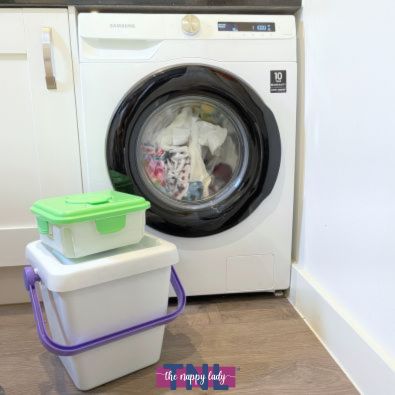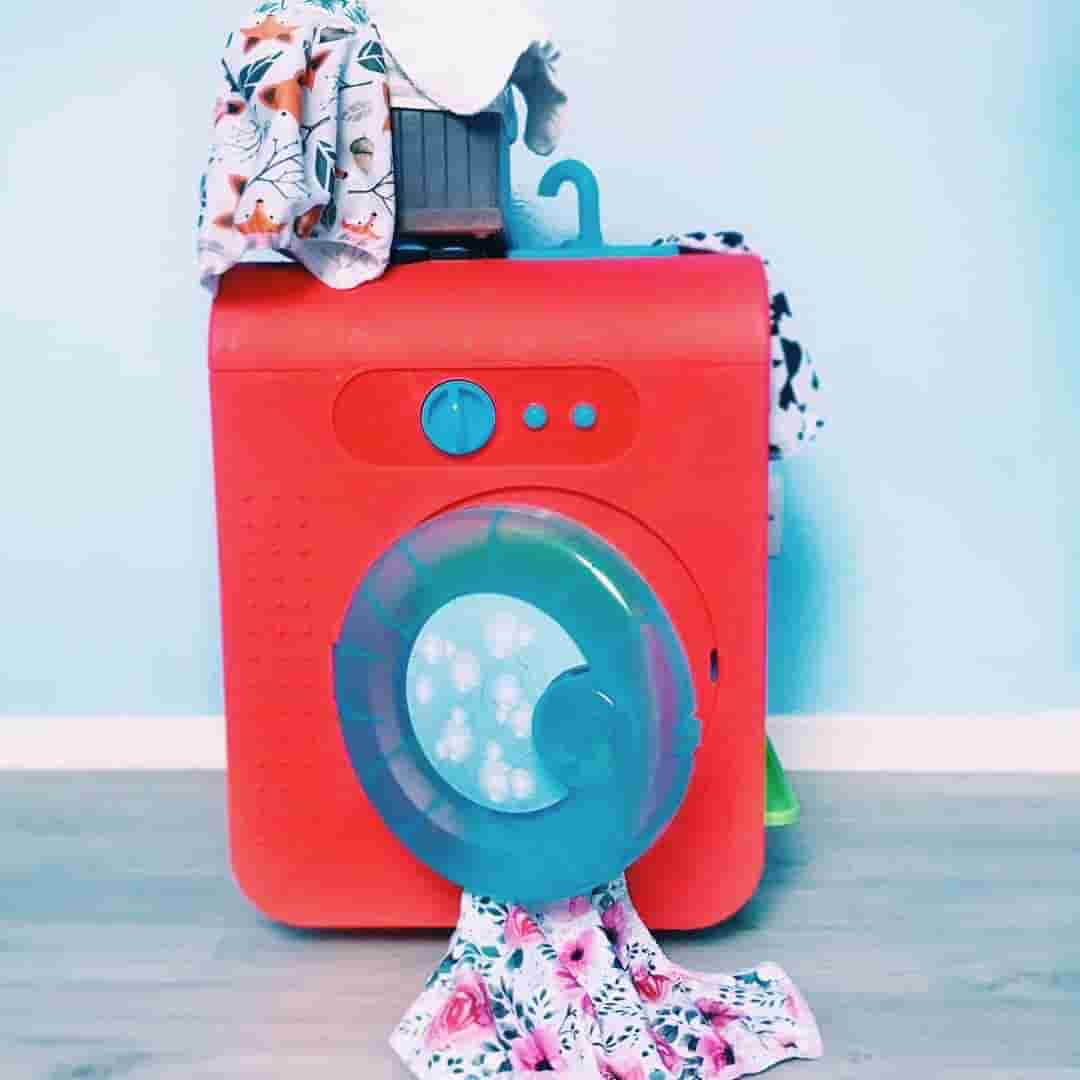Strip Washing Nappies

What is strip washing?
Strip washing is giving your reusable nappies a more intensive wash than usual. It is designed to ‘reset’ any issues that might occur. Strip washing should not be needed regularly. If you find you need to strip wash frequently then it is likely that something within the washing routine is causing an issue.
Why would we need to strip wash?
Strip washing can be needed for a few reasons. Most commonly a strip wash is needed for ammonia building up in the nappies over time, or a detergent residue building up. You might also prefer to strip wash preloved/second hand nappies, or your own set of nappies before using again on a younger sibling.
Detergent Residue
Modern washing machines are incredibly water efficient and use far less water than they used to. Modern cloth nappies are super absorbent and soak up lots of washing water, plus needing more for rinsing. Modern detergents also tend to be very strong. A combination of less water and strong detergents means you risk detergent not being rinsed away and leaving a residue on the nappies.
Ammonia Build Up
Should you not use enough detergent, the machine is overfilled or the machine cycle doesn’t use enough water, this could lead to a build up of ammonia in the nappies as they will not have been thoroughly washed out each time.
Signs that you have a build up within your nappies (detergent or ammonia) and they could benefit from a strip wash include:
- smelling when wet – this is often described as a barnyard or hamster cage smell
- smelling of ammonia or urine when clean
- smelling as soon as your baby wees (although during teething this can just be a sign of strong wee being produced by baby)
- redness when the nappy is removed
- your baby has a persistent rash
- loss of absorbency
- natural fabric nappies appearing to ‘repel’ water (this often happens after washing using liquid detergent)
The good news is these problems are easy to cure and can be prevented from returning. To cure the problem, you need to follow a process called strip washing. I've come across MANY versions of 'strip washing' online including using washing up liquid, dishwasher tablets, vinegar or bleach. The Nappy Lady DOES NOT recommend any of these. All of these methods will invalidate brand warranties, risk damaging your nappies and may lead to skin sensitivity or reaction on baby's skin.
Here is how I always recommend you strip wash:
Before you begin, ensure your washing machine is clean. You should ideally run a maintenance cycle once a month. If you haven't done this lately, run this first and check your machine filters are clean.
- Load the nappies into the machine. You need to ensure that the machine is no more than ¾ full at the beginning of the wash cycle. Strip washing can be done with a smaller load and still be effective.
- Put the nappies through a rinse cycle only with NO detergent and use a low spin. If your machine doesn't have a rinse only cycle use a cool quick wash. This is to get them nice and wet already so there is more water held in them for the main washes.
- Wash using a FULL dose of detergent (the amount for heavy soiling, adjusted for your water type & machine size) and wash at 60 degrees on a long cycle (approx 2.5-3hours) and ideally additional water. We usually find a cotton wash the most effective. Do not adjust the detergent amount for the load size etc. It needs to be the full dose.
- Run a second wash at 60 degrees on the longest possible cycle as above with NO detergent this time and ideally additional water.
- Finally put your nappies through a rinse cycle again as in step 1. If you see any detergent bubbles in the rinse keep on rinsing until you don't see any more.
This should sort them for the short term.
Remember, when calculating the powder dosage you need the full amount of detergent for heavy soiling. Adjust this to increase for water type and machine size. No NOT reduce this amount for the load size. You need the FULL dose for a strip wash.
Preventing the need to strip wash
As mentioned earlier, a strip wash should only ever be needed to solve a particular isolated problem, and you can avoid the need to do it regularly (if at all!) by making sure your washing routine is doing its job.
Read our comprehensive guide to washing your nappies to make sure that the nappies are being washed correctly. The most common areas to cause problems are detergent dosage and loading the machine correctly.
Try to make sure that you wash every two days. In our experience people leaving nappies for longer often struggle to get them clean and frequently experience ammonia build up.
Ensure you run a maintenance cycle on your machine monthly. This might be a pre-set cycle, otherwise use the longest hottest (up to 90 degrees) cycle the machine has.
As a last resort, if you dry pail your nappies you can try to rinse them before they go in the bucket or at least the overnight nappies as these are the worst. However, we don't recommend this is done as standard as leaving nappies wet can cause elastic to deteriorate faster.
If you have any questions regarding strip washing or would like any assistance with strip washing or your usual washing routine then our advice team is always available to help. Fill in our troubleshooting support request form below.

